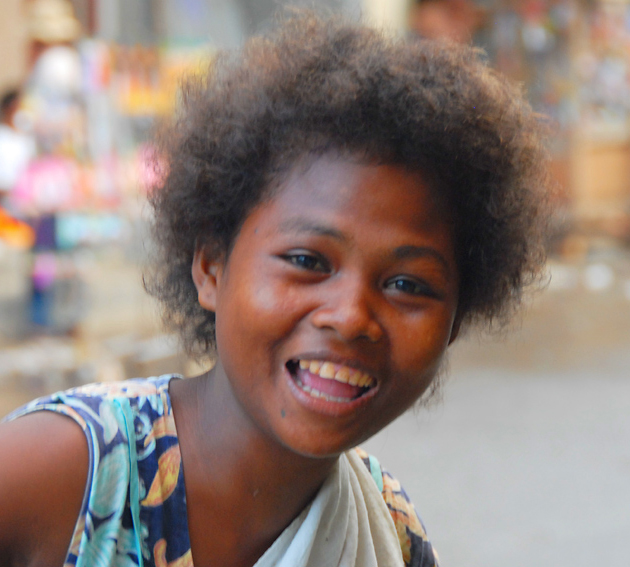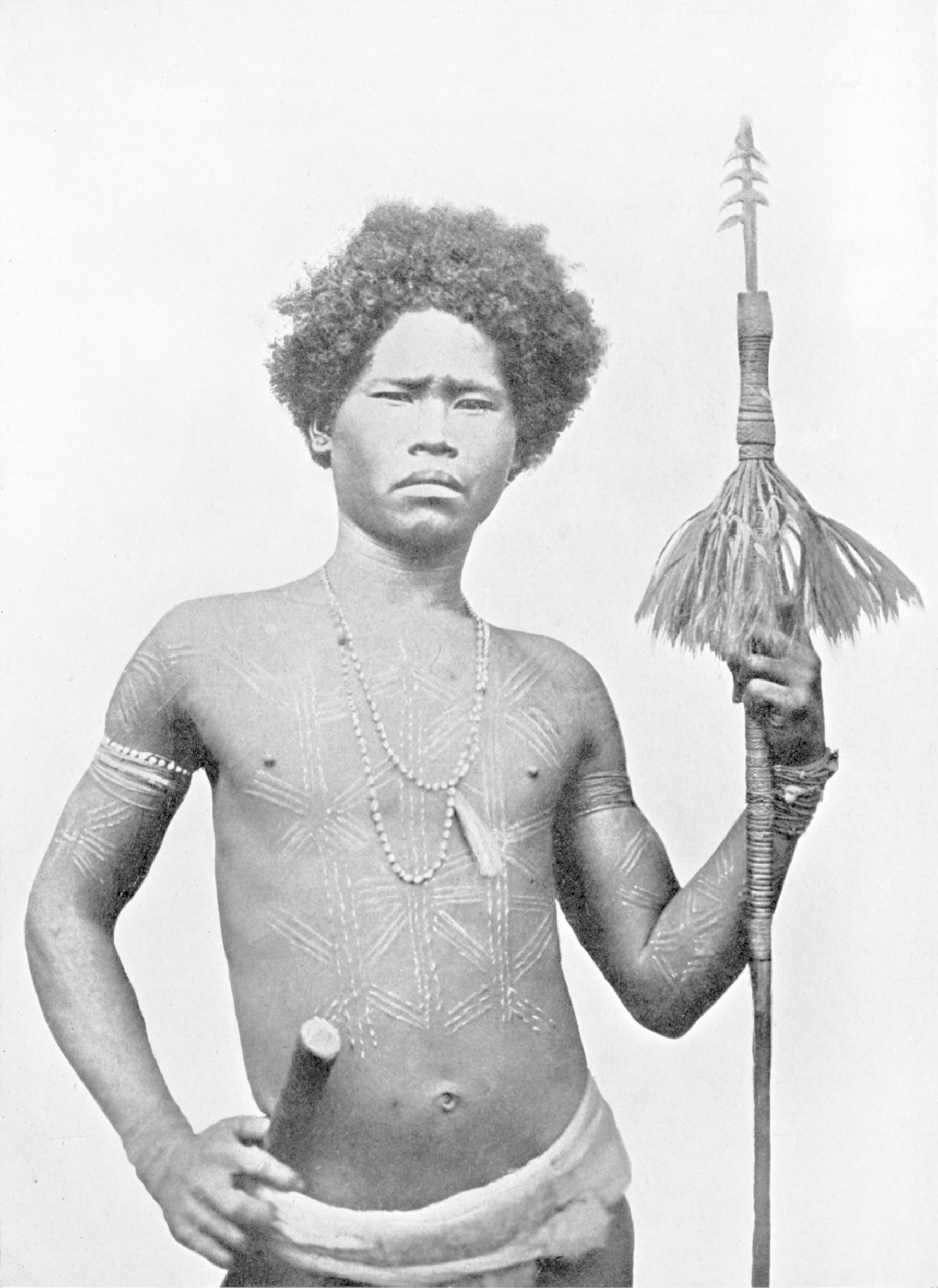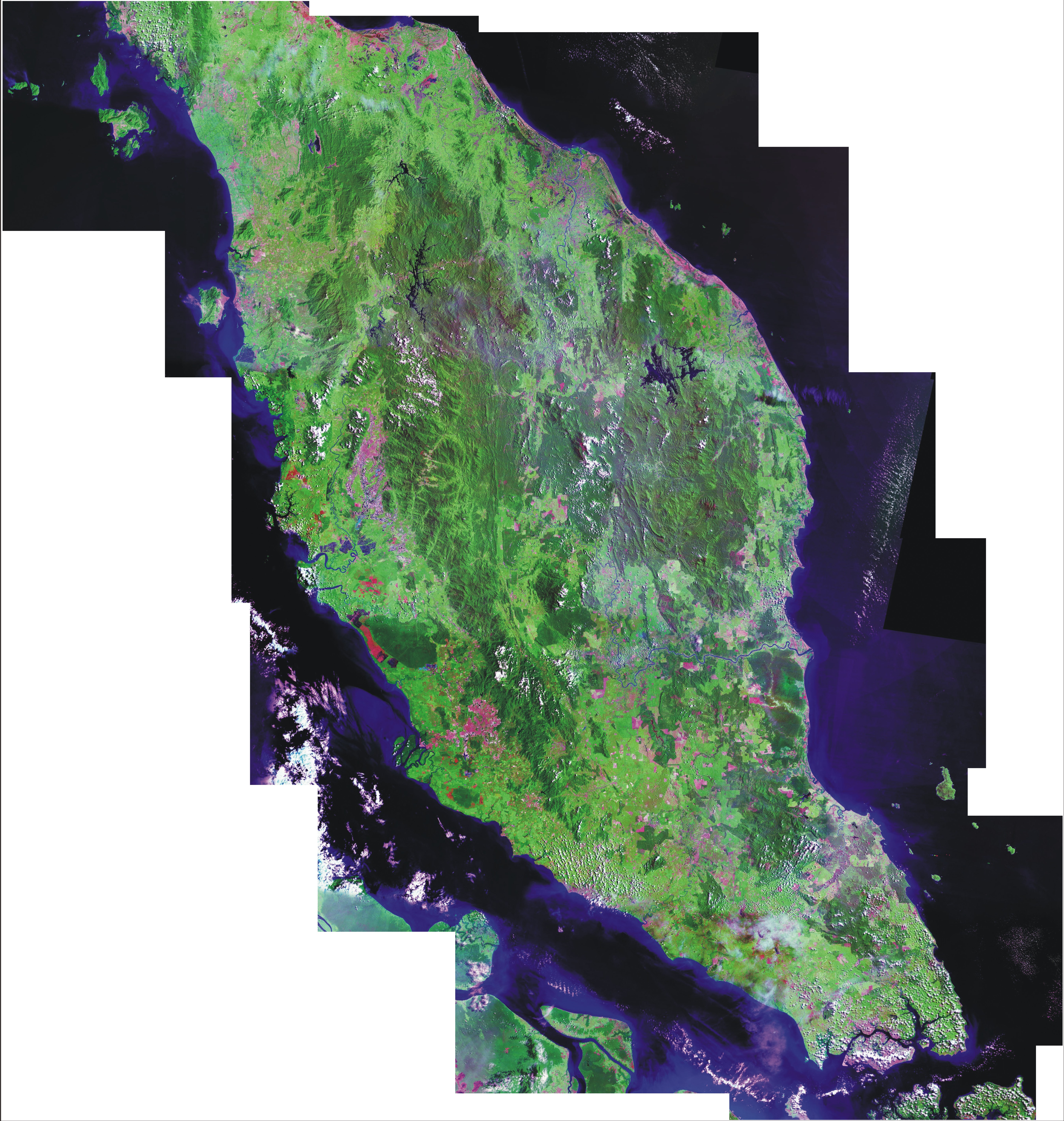|
Negrito People
The term ''Negrito'' (; ) refers to several diverse ethnic groups who inhabit isolated parts of Southeast Asia and the Andaman Islands. Populations often described as Negrito include: the Andamanese peoples (including the Great Andamanese, the Onge, the Jarawa, and the Sentinelese) of the Andaman Islands, the Semang peoples (among them, the Batek people) of Peninsular Malaysia, the Maniq people of Southern Thailand, as well as the Aeta of Luzon, the Ati and Tumandok of Panay, the Mamanwa of Mindanao, and about 30 other officially recognized ethnic groups in the Philippines. Etymology The word ''Negrito,'' the Spanish diminutive of ''negro'', is used to mean "little black person." This usage was coined by 16th-century Spanish missionaries operating in the Philippines, and was borrowed by other European travellers and colonialists across Austronesia to label various peoples perceived as sharing relatively small physical stature and dark skin. Contemporary usage of an alternat ... [...More Info...] [...Related Items...] OR: [Wikipedia] [Google] [Baidu] |
India
India, officially the Republic of India, is a country in South Asia. It is the List of countries and dependencies by area, seventh-largest country by area; the List of countries by population (United Nations), most populous country since 2023; and, since its independence in 1947, the world's most populous democracy. Bounded by the Indian Ocean on the south, the Arabian Sea on the southwest, and the Bay of Bengal on the southeast, it shares land borders with Pakistan to the west; China, Nepal, and Bhutan to the north; and Bangladesh and Myanmar to the east. In the Indian Ocean, India is near Sri Lanka and the Maldives; its Andaman and Nicobar Islands share a maritime border with Thailand, Myanmar, and Indonesia. Modern humans arrived on the Indian subcontinent from Africa no later than 55,000 years ago., "Y-Chromosome and Mt-DNA data support the colonization of South Asia by modern humans originating in Africa. ... Coalescence dates for most non-European populations averag ... [...More Info...] [...Related Items...] OR: [Wikipedia] [Google] [Baidu] |
Onge
The Onge (also Önge, Ongee, and Öñge) are an Andamanese ethnic group, indigenous to the Andaman Islands in Southeast Asia at the Bay of Bengal, India. They are traditionally hunter-gatherers and fishers, but also practice plant cultivation. They are designated as a Scheduled Tribe of India. History In the 18th century the Onge were distributed across Little Andaman Island and the nearby islands, with some territory and camps established on Rutland Island and the southern tip of South Andaman Island. After they encountered British colonial officers, friendly relations were established with the British Empire in the 1800s through Lieutenant Archibald Blair. British naval officer M. V. Portman described them as the "mildest, most timid, and inoffensive" group of Andamanese people he had encountered. By the end of the 19th century they sometimes visited the South and North Brother Islands to catch sea turtles; at the time, those islands seemed to be the boundary betwe ... [...More Info...] [...Related Items...] OR: [Wikipedia] [Google] [Baidu] |
Mamanwa
The Lumad are a group of Austronesian indigenous peoples in the southern Philippines. It is a Cebuano term meaning "native" or "indigenous". The term is short for Katawhang Lumad (Literally: "indigenous people"), the autonym officially adopted by the delegates of the Lumad Mindanao Peoples Federation (LMPF) founding assembly on 26 June 1986 at the Guadalupe Formation Center, Balindog, Kidapawan, Cotabato. Usage of the term was accepted in Philippine jurisprudence when President Corazon Aquino signed into law Republic Act 6734, where the word was used in Art. XIII sec. 8(2) to distinguish Lumad ethnic communities from the islands of Mindanao. Mindanao is home to a substantial part of the country's indigenous population, comprising around 15% of the Philippine population.National Statistics Office. "Statistics on Filipino Children." Journal of Philippine Statistics, vol. 59, no. 4, 2008, p. 119. History The name ''Lumad'' grew out of the political awakening among tribes du ... [...More Info...] [...Related Items...] OR: [Wikipedia] [Google] [Baidu] |
Panay
Panay is the sixth-largest and fourth-most populous island in the Philippines, with a total land area of and a total population of 4,542,926, as of 2020 census. Panay comprises 4.4 percent of the entire population of the country. The City of Iloilo is its largest settlement, with a total population of 457,626 inhabitants as of the 2020 census. Panay is a triangular island, located in the western part of the Visayas. It is about across. It is divided into four Provinces of the Philippines, provinces: Aklan, Antique (province), Antique, Capiz, and Iloilo, all in the Western Visayas Regions of the Philippines, Region. Just off the mid-southeastern coast lies the island-province of Guimaras. It is located southeast of the island of Mindoro and northwest of Negros Island, Negros across the Guimaras Strait. To the north and northeast is the Sibuyan Sea, Jintotolo Channel and the island-provinces of Romblon and Masbate; to the west and southwest is the Sulu Sea and the Palawan archipe ... [...More Info...] [...Related Items...] OR: [Wikipedia] [Google] [Baidu] |
Suludnon
The Suludnon, also known as the Panay-Bukidnon, Pan-ayanon, or Tumandok, are a Visayan group of people who reside in the Capiz-Antique-Iloilo mountainous area of Panay in the Visayan islands of the Philippines. They are one of the two only mostly non-Christianized group of Visayan language-speakers in the Western Visayas, along with the Halawodnon of Lambunao and Calinog, Iloilo and Iraynon-Bukidnon of Antique. Also, they are part of the wider Visayan ethnolinguistic group, who constitute the largest Filipino ethnolinguistic group. Although they were once culturally related to the speakers of the Kinaray-a, Aklanon, and Hiligaynon languages, all of whom inhabit the lowlands of Panay, their isolation from Spanish rule resulted in the continuation of a pre-Hispanic culture and beliefs. They speak the Iigbok language (also known as Ligbok or Sulod language), a member of the West Bisayan subdivision of the Bisayan languages within the Austronesian language family. The Pan ... [...More Info...] [...Related Items...] OR: [Wikipedia] [Google] [Baidu] |
Ati People
The Ati are a Negrito ethnic group and indigenous peoples in the Visayan Islands of the Philippines. Their small numbers are principally concentrated on the islands of Boracay, Panay and Negros. They are genetically related to other Negrito ethnic groups in the Philippines such as the Aeta of Luzon, the Batak of Palawan, the Agta of the Sierra Madres, and the Mamanwa of Mindanao. History The Negritos are the descendants of the same early East Eurasian meta-population, which also gave rise to modern East Asians and Australasians, among other populations of the Asia-Pacific region. The earliest modern human migrations into the Philippine archipelago were during the Paleolithic, around 40,000 years ago, followed by two other migration waves between 25,000 and 12,000 years ago, through the Sundaland land bridges that linked the islands with the Asian mainland. The latest migration wave is associated with the Austronesian peoples (c. 7,000 years ago) from Taiwan. The Philippine Neg ... [...More Info...] [...Related Items...] OR: [Wikipedia] [Google] [Baidu] |
Luzon
Luzon ( , ) is the largest and most populous List of islands in the Philippines, island in the Philippines. Located in the northern portion of the List of islands of the Philippines, Philippine archipelago, it is the economic and political center of the nation, being home to the country's capital city, Manila, as well as Quezon City, the country's most populous city. With a population of 64 million , it contains 52.5% of the country's total population and is the List of islands by population, 4th most populous island in the world. It is the List of islands by area, 15th largest island in the world by land area. ''Luzon'' may also refer to one of the three primary Island groups of the Philippines, island groups in the country. In this usage, it includes the Luzon Mainland, the Batanes and Babuyan Islands, Babuyan groups of islands to the north, Polillo Islands to the east, and the outlying islands of Catanduanes, Marinduque and Mindoro, among others, to the south. The islands o ... [...More Info...] [...Related Items...] OR: [Wikipedia] [Google] [Baidu] |
Aeta People
Aeta (Ayta ), Agta and Dumagat, are collective terms for several indigenous peoples who live in various parts of Luzon islands in the Philippines. They are included in the wider Negrito grouping of the Philippines and the rest of Southeast Asia, with whom they share superficial common physical characteristics such as: dark skin tones; short statures; frizzy to curly hair; and a higher frequency of naturally lighter hair colour ( blondism) relative to the general population. They are thought to be among the earliest inhabitants of the Philippines—preceding the Austronesian migrations. Regardless, the modern Aeta populations have significant Austronesian admixture, and speak Austronesian languages. Aeta communities were historically nomadic hunter-gatherers, typically consisting of approximately one to five families per mobile group. Groups under the "Aeta" umbrella term are normally referred to after their geographic locations or their common languages. Etymology The e ... [...More Info...] [...Related Items...] OR: [Wikipedia] [Google] [Baidu] |
Southern Thailand
Southern Thailand (formerly Southern Siam and Tambralinga) is the southernmost cultural region of Thailand, separated from Central Thailand by the Kra Isthmus. Geography Southern Thailand is on the Malay Peninsula, with an area of around , bounded to the north by Kra Isthmus, the narrowest part of the peninsula. The western part has highly steep coasts, while on the east side river plains dominate. The largest river in the south is the Tapi, in Surat Thani, which, together with the Phum Duang in Surat Thani, drains more than , more than 10 percent of the total area of southern Thailand. Smaller rivers include the Pattani, Saiburi, Krabi, and the Trang. The largest lake in the south is Songkhla Lake ( altogether). The largest artificial lake is the Chiao Lan (Ratchaprapha Dam), occupying of Khao Sok National Park in Surat Thani. The total forest area is or 24.3 percent of provincial area. Running through the middle of the peninsula are several mountain chains, wit ... [...More Info...] [...Related Items...] OR: [Wikipedia] [Google] [Baidu] |
Maniq People
The Maniq or Mani are a Negrito ethnic group of Thailand. They are more widely known in Thailand as the ''Sakai'' (), a controversial derogatory term meaning 'barbarism'. They are the only Negritos in Thailand and speak a variety of related Aslian languages, primarily Kensiu language, Kensiu and Ten'edn, which do not have standard writing systems. In Thailand, the Maniq minority live in the southern provinces of Yala province, Yala, Narathiwat province, Narathiwat, Phatthalung province, Phatthalung, Trang province, Trang, and Satun province, Satun. Genetics Among the Maniq, balancing selection has been identified in genes relating to Olfactory receptor, olfactory receptors and the immune system (particularly within the Human leukocyte antigen, HLA region). In the latter case, this Natural selection, selection occurred due to the benefit of genetic diversity in a pathogen-rich environment (such as the rainforests the Maniq inhabit), so as to protect against a wide range of threa ... [...More Info...] [...Related Items...] OR: [Wikipedia] [Google] [Baidu] |
Peninsular Malaysia
Peninsular Malaysia, historically known as Malaya and also known as West Malaysia or the Malaysian Peninsula, is the western part of Malaysia that comprises the southern part of the Malay Peninsula on Mainland Southeast Asia and the list of islands of Malaysia, nearby islands. Its area totals approximately , which is nearly 40% of the total area of the country; the other 60% is in East Malaysia on the island of Borneo. It shares a land border with Thailand to the north and a maritime border with Singapore to the south. Across the Strait of Malacca to the west lies the island of Sumatra, and across the South China Sea to the east lie the Natuna Islands of Indonesia. At its southern tip, across the Strait of Johor, lies the island country of Singapore. Most of Peninsular Malaysia's interior is forested, mountainous and rural; the majority of Malaysia's population and economy are concentrated on the coastal western half, which is where the country's prominent urban areas are located ... [...More Info...] [...Related Items...] OR: [Wikipedia] [Google] [Baidu] |
Batek People
The Batek (or Bateq) people are an indigenous Orang Asli people (numbering about 1,519 in 2000) belonging to the Semang group, who live in the rainforest of peninsular Malaysia. As a result of encroachment, they now primarily inhabit the Taman Negara National Park. The Batek are nomadic hunter-gatherer, hunters and gatherers, so the exact location of their community, settlements change within the general confines of the area that they inhabit. The common phrase used to refer to them, 'Orang Asli, orang asli', signifies a diverse group of which the Batek tribe is a part. It means 'original people' in Malay language, Malay and was probably first used to identify these people by the British people, British. The Batek, however, refer to themselves as 'Batek Teh', which means "forest people". The Malay Srivijaya empire came in contact with the Negrito. Historically they traded with the local populations while other times they were subjected to exploitation, raids, Slavery in Malaysia, ... [...More Info...] [...Related Items...] OR: [Wikipedia] [Google] [Baidu] |








